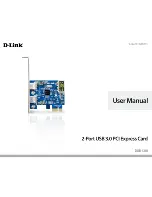
* Bluetooth and the Bluetooth logos are trademarks owned by Bluetooth SIG, Inc., U.S.A. and licensed to LinTech
GmbH, Berlin Germany.
20
9. Agency and Regulatory Body Approvals
Bluetooth product operating in 2.4GHz band for Home and use.
9.1. Exposure to Radio Frequency Radiation
The radiated output power of the BT RS232 Mini Adaptor 1408/1409 are far below the FCC, Industry Canada and
European Union radio frequency exposure limits. Nevertheless, the wireless radio shall be used in such a manner
that the potential for human contact during normal operation is minimized. The internal wireless radio operates
within guidelines found in radio frequency safety standards and recommendations which reflect the consensus of
the scientific community.
The level of emitted energy emitted is far less than the electromagnetic energy emitted by wireless devices such
as mobile phones. However, the use of wireless radios may be restricted in some situations or environments,
such as aboard airplanes. If you are unsure of restrictions, you are encouraged to ask for authorization before
turning on the wireless radio.
The FCC, Industry Canada and European Union have set a general guideline of 20 cm (8 inches) separation
between the device and the body. This device should be used more than 20 cm (8 inches) from the body when
wireless devices are on.
9.2. FCC Part 15 Radio Frequency Interference Statement
This device complies with Part 15 of the FCC Rules. Operation is subject to the following two conditions:
• This device may not cause harmful interference.
• This device must accept any interference received, including interference that may cause undesired operation.
Note: This equipment has been tested and found to comply with the limits for a Class B digital device, pursuant to
Part 15 of the FCC Rules. These limits are designed to provide reasonable protection against harmful interference
in a residential installation. This equipment generates, uses and can radiate radio frequency energy and, if not
installed and used in accordance with the instructions, may cause harmful interference to radio communications.
However, there is no guarantee that interference will not occur in a particular installation. If this equipment does
cause harmful interference to radio or television reception, which can be determined by turning the equipment off
and on. The user is encouraged to correct the interference by one or more of the following measures:
• Reorient or relocate the receiving antenna.
• Increase the separation between the equipment and the receiver.
• Connect the equipment into an outlet that is on a circuit different from the receiver.
• Consult the dealer or an experienced radio/TV technician for help.
Caution:
Pursuant to Part 15.21 of the FCC Rules for intentional or unintentional radiators, any changes
or modifications not expressly approved by the party responsible for compliance could void the user's
authority to operate this equipment.
9.3. Industry Canada ICES-003 Emission Compliance Statement
This Class B digital apparatus meets the requirement of the Canadian Interference-Causing Equipment
Regulations.
Cet appareil numérique de la classe B respecte toutes les exigences du règlement sur le matériel brouiller du
Canada.



































